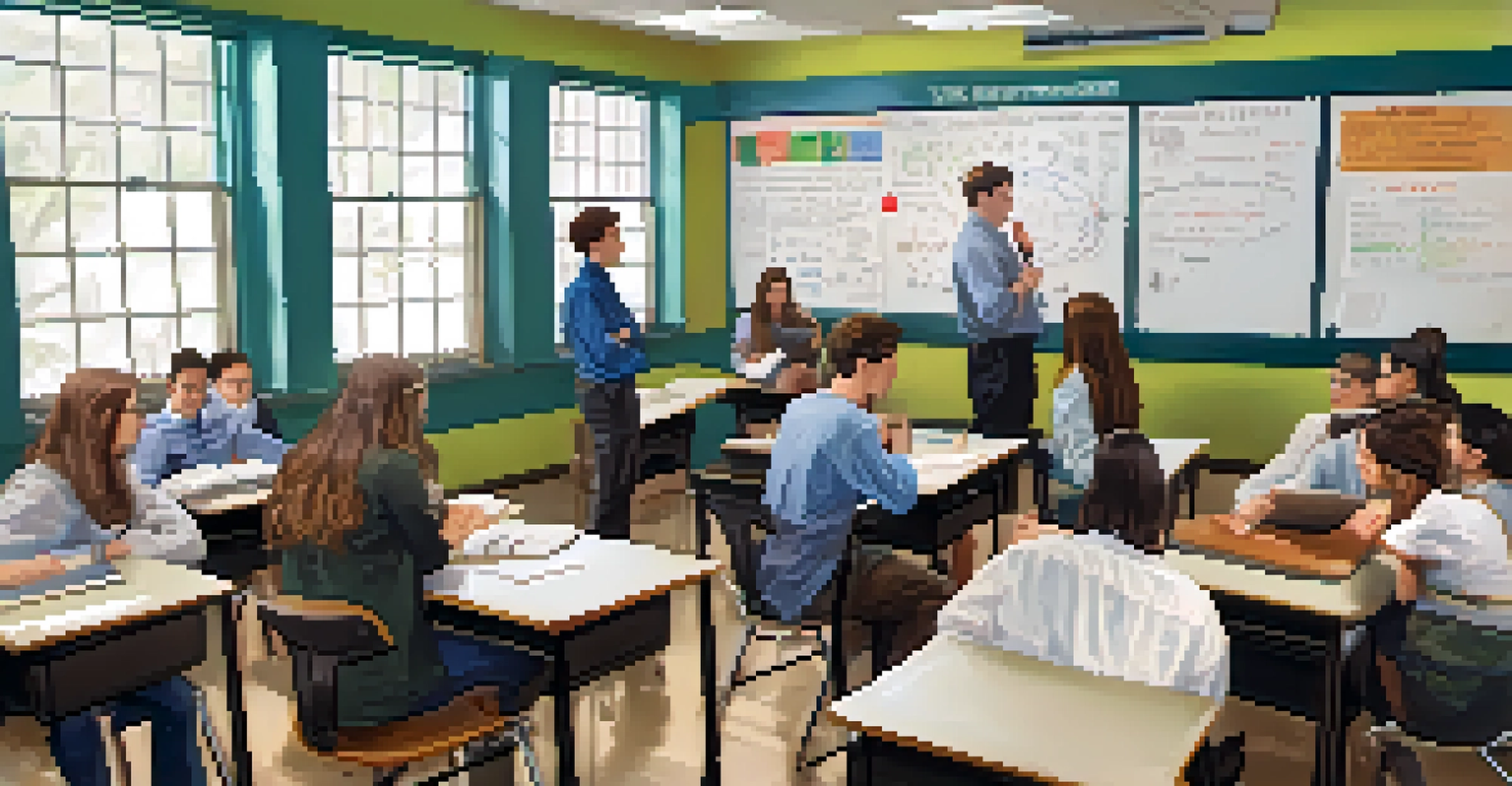Innovative Programs in Missouri's K-12 Educational Framework

Missouri's Commitment to Innovative Education Programs
Missouri has made significant strides in enhancing its K-12 educational framework. By prioritizing innovative programs, the state aims to equip students with skills essential for the modern world. This commitment reflects an understanding that education must evolve to meet the changing demands of society and the economy.
Education is the most powerful weapon which you can use to change the world.
One of the standout features of Missouri's approach is its focus on personalized learning. Schools are adopting flexible curricula that cater to individual student needs, allowing for a more tailored educational experience. This shift not only helps students grasp concepts more effectively but also fosters a love for learning.
Furthermore, Missouri encourages collaboration between schools, businesses, and communities. These partnerships help create real-world learning opportunities, giving students a taste of what lies beyond the classroom. As a result, students are better prepared for future careers, making education more relevant and impactful.
Project-Based Learning: Engaging Students Through Action
Project-based learning (PBL) is gaining traction in Missouri's K-12 education, providing students with hands-on experiences. By allowing students to tackle real-world problems, PBL nurtures critical thinking and teamwork. It transforms the learning environment into a space where students can explore their interests while developing essential life skills.

For instance, some schools have implemented community service projects that allow students to engage with local issues. This not only enhances their understanding of the subject matter but also instills a sense of social responsibility. Students learn to see themselves as active contributors to their communities, rather than passive recipients of knowledge.
Personalized Learning in Missouri
Missouri is prioritizing personalized learning to cater to individual student needs, enhancing their educational experience.
Moreover, PBL encourages creativity, as students devise innovative solutions to challenges. This approach not only makes learning more enjoyable but also prepares students for the unpredictability of the future job market. In an era where adaptability is key, skills acquired through PBL are invaluable.
STEM Initiatives: Fostering Future Innovators
Missouri is placing a strong emphasis on STEM (Science, Technology, Engineering, and Mathematics) education within its K-12 framework. The state recognizes that cultivating interest in these fields is essential for preparing students for the jobs of tomorrow. By integrating STEM into the curriculum, educators aim to spark curiosity and innovation.
The future belongs to those who believe in the beauty of their dreams.
One effective initiative is the introduction of coding and robotics classes in elementary and middle schools. These programs not only teach technical skills but also promote logical thinking and problem-solving. As students learn to build and program robots, they gain hands-on experience that is both educational and enjoyable.
Additionally, partnerships with local tech companies provide students with mentorship opportunities and exposure to real-world applications of STEM. By connecting classroom learning to industry practices, students see the relevance of their education. This practical approach helps demystify STEM and encourages more students to pursue careers in these critical fields.
Social-Emotional Learning: Building Resilient Students
Recognizing the importance of mental health, Missouri schools are increasingly integrating social-emotional learning (SEL) into their programs. SEL focuses on developing skills such as empathy, self-regulation, and interpersonal relationships. This holistic approach ensures that students not only excel academically but also thrive emotionally.
For example, some districts have adopted mindfulness practices, teaching students techniques to manage stress and anxiety. These practices create a supportive learning environment where students feel safe to express themselves. As a result, students are better equipped to handle challenges both in and outside of school.
STEM Education Initiatives
The state is emphasizing STEM education through coding and robotics classes to prepare students for future careers.
Moreover, SEL initiatives foster a sense of community within schools. By encouraging collaboration and understanding among peers, students learn valuable communication skills. This nurturing environment ultimately leads to improved academic performance and a more positive school culture.
Dual Credit Programs: Bridging High School and College
Dual credit programs in Missouri offer high school students the chance to earn college credits while still in school. This innovative approach not only saves time but also reduces the overall cost of higher education for families. By exposing students to college-level coursework, these programs help ease the transition from high school to post-secondary education.
Participating in dual credit courses allows students to experience the rigor of college academics. They learn essential study skills and time management techniques that will benefit them in their future studies. This hands-on experience also helps clarify students' academic and career goals, giving them a clearer path forward.
Additionally, dual credit programs foster a sense of achievement and confidence in students. As they successfully navigate college courses, they realize their potential and capabilities. This empowerment is crucial in motivating students to pursue their education further, ultimately leading to higher graduation rates.
Inclusive Education: Supporting All Learners
Missouri's educational framework is increasingly prioritizing inclusive education, ensuring that all students have access to quality learning opportunities. This approach recognizes that every student, regardless of their background or ability, deserves a chance to succeed. By fostering an inclusive environment, schools are better equipped to meet diverse learning needs.
To support this initiative, many schools are implementing differentiated instruction strategies. Teachers are trained to tailor their lessons to accommodate various learning styles and abilities. This personalization helps engage all students, allowing them to thrive within the classroom setting.
Community Partnerships Enhance Learning
Strong community partnerships in Missouri are enriching educational resources and creating real-world experiences for students.
Moreover, inclusive education promotes a culture of acceptance and respect among students. As they learn to appreciate each other's differences, they develop empathy and understanding. This sense of community not only enhances the learning experience but also prepares students for a diverse world.
Community Partnerships: Enhancing Educational Resources
Missouri's K-12 educational framework benefits from strong community partnerships that enhance resources and opportunities for students. Schools are collaborating with local organizations, businesses, and higher education institutions to create a rich learning environment. These partnerships help bridge the gap between academic learning and real-world experiences.
For instance, mentorship programs connect students with professionals in various fields, providing guidance and support. This exposure allows students to explore career options and cultivate valuable networks. Additionally, local organizations often contribute resources such as guest speakers, workshops, and internships, enriching the educational experience.

By fostering these connections, Missouri schools are not only improving educational outcomes but also strengthening community ties. Students gain a broader perspective on the world around them, making their education more relevant. This collaborative approach ensures that schools are equipped to prepare students for success in life beyond the classroom.